Fez is one of the oldest and most magnificent cities in Morocco, an essential destination for visitors seeking authenticity and history. The city is rich with diverse tourist attractions that tell stories of an ancient past and authentic Moroccan civilization through the centuries. In this guide, we’ll take you on a tour to explore the most prominent tourist attractions in Fez, including the beating heart of Fes el-Bali, the historic Bou Inania Madrasa, the famous Fez Tanneries, the traditional markets, the Royal Palace, Borj Nord, Jnan Sbil Gardens, and the Andalusian Mosque.
Fes el-Bali: The Beating Heart of the Old Medina and UNESCO Heritage
Fes el-Bali is not just a place, but a journey through time. It’s the oldest and largest part of Fez city and a UNESCO World Heritage site since 1981. Founded in the 9th century, it’s considered one of the largest walled ancient cities in the world that is still inhabited.
Wandering Through the Maze of Fes el-Bali Alleys
Fes el-Bali is characterized by a complex network of narrow, winding alleys numbering over 9,000, where cars are prohibited, making it a pedestrian-only zone. As you wander through this maze, you’ll be immersed in distinctive sounds, smells, and colors: the aroma of spices and herbs, the sounds of artisans working skillfully, the colors of zellige (mosaic) and hanging textiles, and the calls of street vendors. This is where most of the historical landmarks and traditional markets in the city are concentrated.
The Historical and Cultural Significance of Fes el-Bali
Throughout the ages, Fes el-Bali has played a pivotal role as a cultural, scientific, and commercial center. It housed the Al-Qarawiyyin Mosque, considered one of the oldest universities in the world, and was a center for crafts, trade, and sciences. The city witnessed many historical events and was ruled by several dynasties such as the Idrisids, Almoravids, Almohads, Marinids, and Alaouites, each leaving their architectural and cultural imprint on the city.
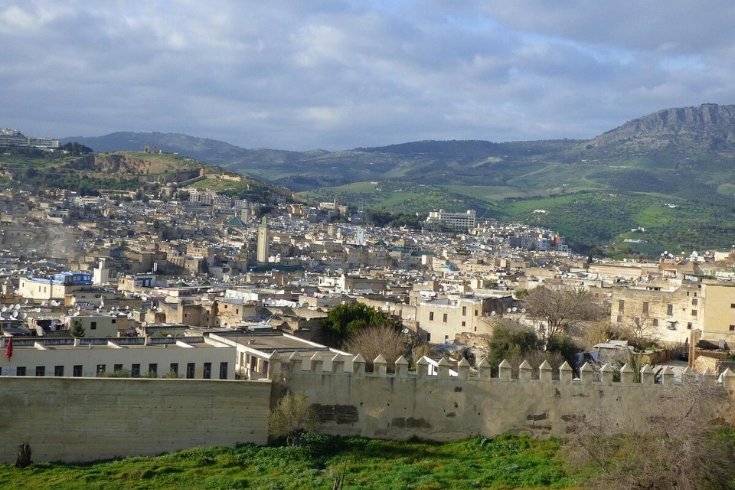
Prominent Historical, Religious, and Architectural Landmarks Inside Fes el-Bali
Within the walls of Fes el-Bali, you’ll find a collection of remarkable tourist attractions that reflect Fez’s rich history and stunning architecture. Here are some of the most important landmarks not to be missed:
Bou Inania Madrasa
The Bou Inania Madrasa is one of the most beautiful historical religious schools in Morocco and one of the most architecturally complete. It was built by the Marinid Sultan Abu Inan between 1350 and 1355 to serve as both a religious school and a mosque. It’s distinguished by its amazing decorations of zellige (mosaics), carved plaster, intricate woodwork, and exquisite Arabic calligraphy. It’s one of the few monuments in Fez that non-Muslims can visit (for an entrance fee). The madrasa is also known for its traditional water clock (Menkala) located outside the building, one of the oldest water clocks in the world.
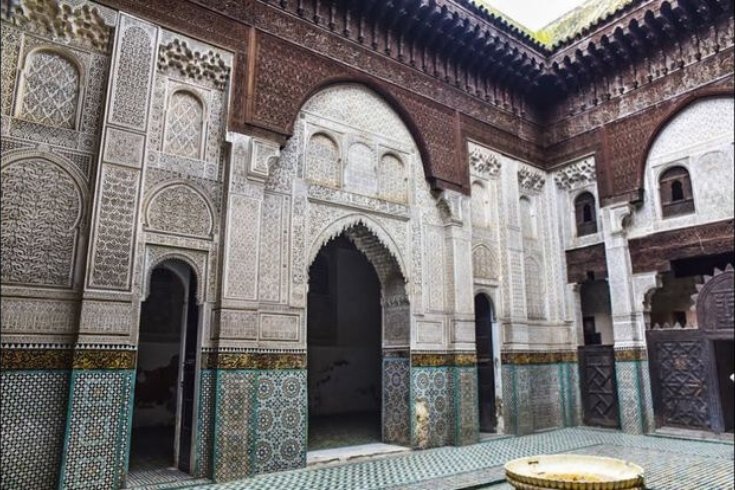
Fez Tanneries (Chouara)
The Fez Tanneries, especially those of Chouara, are among the most famous and distinctive tourist attractions in Fez. They date back to the 11th century and still operate using traditional methods to this day. They comprise hundreds of circular vats filled with colored dyes extracted from natural materials such as indigo, saffron, and poppy, along with lime and salt vats used in the leather tanning process.
The best view of the tanneries is from the terraces of surrounding leather shops (whose owners usually offer mint leaves to visitors to mitigate the strong odor). The view from above is truly impressive, with the vats appearing like an artwork of multiple colors scattered among the old stone buildings, while tanners work using centuries-old methods.
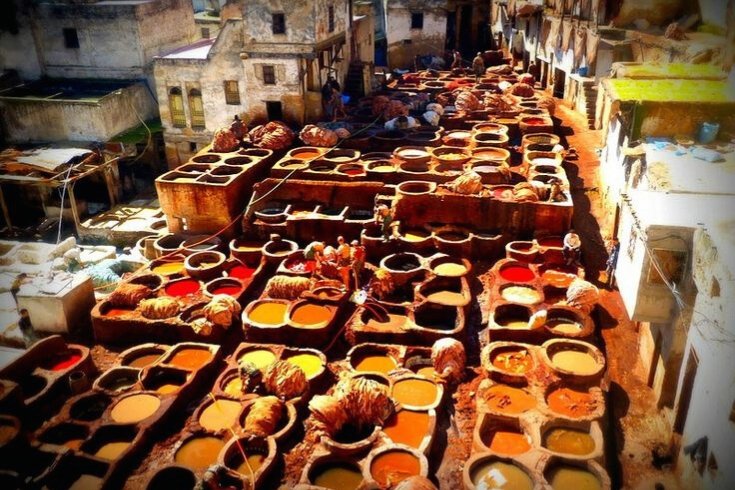
Andalusian Mosque
The Andalusian Mosque is an important historical landmark in the Andalusian quarter of Fes el-Bali. It was founded by Andalusian refugees coming from Spain in the 9th century after their migration from Andalusia. The mosque is distinguished by its Andalusian-Moroccan style minaret and beautiful decorations. Despite its historical importance, non-Muslims are not allowed to enter the mosque, but they can observe its minaret and entrance from the outside.
This mosque constitutes an important part of Morocco’s history and its relationship with Andalusia, symbolizing the cultural diversity that enriched the city of Fez throughout the ages.
Traditional Markets (Souks)
The traditional markets (souks) of Fes el-Bali are a major tourist destination in themselves, and a unique sensory experience that combines colors, smells, and sounds. These markets are distinguished by their division according to specialty:
- Souk El Attarine: Specialized in spices, herbs, and traditional perfumes.
- Souk of Coppersmiths: Where copper and metal objects are made and sold.
- Souk of Dyers: Dedicated to dyes and textiles.
- Souk El Kharratine: For wood and wooden products.
- Souk of Henna: Specialized in henna and natural beauty products.
These markets constitute a living museum of traditional Moroccan craftsmanship, where visitors can observe artisans working with traditional skills passed down through generations. Bargaining is advised when shopping as part of the cultural experience, while maintaining respect and cordiality.
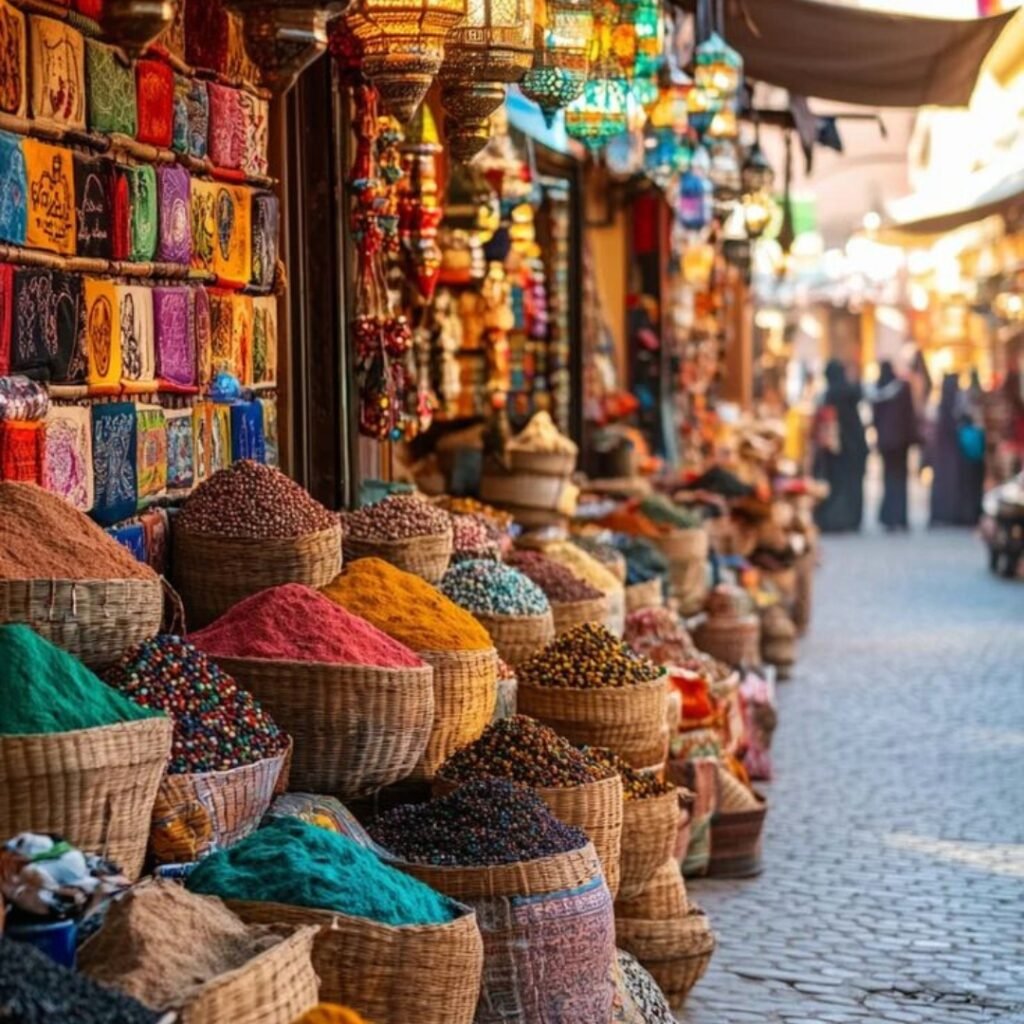
Notable Landmarks Outside or at the Edges of Fes el-Bali
Besides Fes el-Bali, Fez also houses other important tourist attractions located outside the walls of the old medina or at its periphery. These sites complement the experience of visiting tourist attractions in Fez and give a more complete picture of the city’s history and development.
The Royal Palace
The Royal Palace is located in Fes el-Jdid (the area created by the Marinids in the 13th century) and is one of the most important royal palaces in Morocco. Although it is the residence of the Moroccan monarch when visiting Fez and thus not open to visitors, its huge golden doors decorated with copper and ceramics are an architectural marvel worth seeing.
In front of the palace is a large square (Place des Alaouites) that allows visitors to take beautiful photos of the royal gates. The palace reflects authentic Moroccan architectural art with a blend of Andalusian, Arabic, and Berber influences.
Borj Nord
Borj Nord is a historical fortress built in the 16th century under the Saadians on the northern hills overlooking Fes el-Bali. The fortress today houses the Museum of Arms, which displays a large collection of historical Moroccan and international weapons from different periods.
But the most captivating attraction of Borj Nord is the spectacular panoramic view it offers of the entire medina, allowing visitors to appreciate the size and design of Fes el-Bali from above. The fortress can be reached by small taxi from the city center.
Jnan Sbil Gardens
The Jnan Sbil Gardens are located between Fes el-Bali and Fes el-Jdid and constitute a peaceful green oasis amid the bustle of the city. These public gardens were created in the 19th century during the reign of Sultan Hassan I and have recently been renovated.
The gardens extend over 7.5 hectares and include a mix of local and rare plants, ponds, fountains, and shaded walkways. They are the ideal place to relax after a busy day exploring the medina, and are also a popular meeting place for locals.
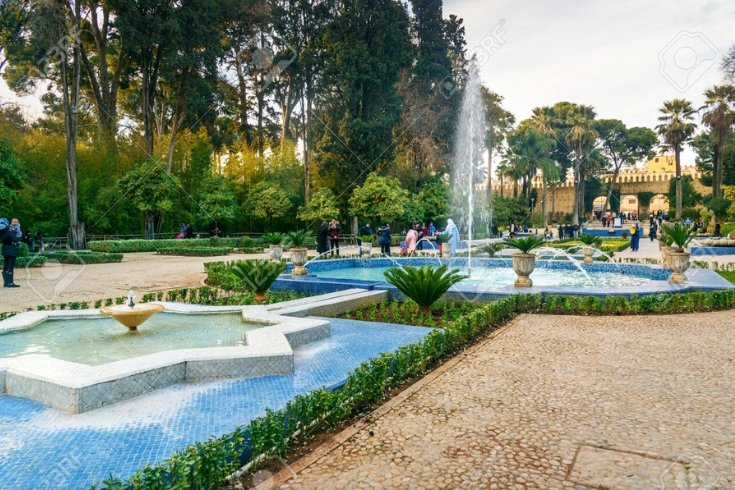
The Importance of These Tourist Attractions in Fez
Together, the tourist attractions in Fez offer a unique cultural and historical experience. By visiting Fes el-Bali, you can immerse yourself in the fragrances of history and experience the traditional Islamic city in all its details. The Bou Inania Madrasa reflects the grandeur of Moroccan architectural art, while the Fez Tanneries show traditional crafts that have withstood the test of time.
The traditional markets represent the pulse of daily life and ongoing commercial activity for centuries, and the Royal Palace testifies to the continuity of tradition and royalty. Borj Nord offers an overview of the city, and Jnan Sbil represents the balance between urbanization and nature in Moroccan culture.
These monuments not only present a glimpse of the past but also reflect the continuity and vitality of Moroccan culture, and its ability to preserve its authenticity while adapting to the requirements of contemporary life.
Visiting Tourist Attractions in Fez: Practical Guide and Important Tips
To make the most of your visit to the tourist attractions in Fez, here are some practical tips for getting around, exploring, and choosing the best times to visit.
Getting Around Fez (Fes el-Bali and Fes el-Jdid)
- Inside Fes el-Bali: Walking is the only means of transportation, as cars are prohibited. It is highly recommended to use a local tour guide, especially on the first day, to avoid getting lost in the maze and to get detailed explanations about the landmarks.
- Between Fes el-Bali and Fes el-Jdid: You can use small taxis (petit taxi) which are available at reasonable prices, or public buses.
- To reach Borj Nord: You will need a taxi; agree on the price before getting in.
- Jnan Sbil: Can be accessed on foot from Bab Boujloud or from Fes el-Jdid.
Visitation Rules and Behavior (Particularly for Religious Sites and Markets)
- For religious sites: Wear modest clothing that covers shoulders and knees. Respect the sanctity of the place, and remember that active mosques like the Andalusian Mosque do not allow entry to non-Muslims.
- In traditional markets: Bargaining is part of the culture, but with kindness and respect. Ask permission before photographing artisans or their merchandise. Pay attention to your personal belongings in crowded areas.
- Fez Tanneries: Mint leaves are usually offered to visitors to mitigate the effect of strong odors. You might be asked to pay a small sum to the owners of shops overlooking the tanneries in exchange for the view.
Visiting Hours and Fees
- Bou Inania Madrasa: Generally open from 9 AM to 6 PM, with entrance fees ranging between 20-40 Moroccan dirhams.
- Arms Museum at Borj Nord: Open from 9 AM to 5 PM, closed on Tuesdays, with entrance fees of around 20 dirhams.
- Jnan Sbil Gardens: Generally open from morning until sunset, entry is free.
- Fes el-Bali and the souks: Open all day, but shops usually close during Friday prayer and during religious holidays.
Best Time to Visit
- Seasonally: Spring (March-May) and autumn (September-November) are the best times to visit Fez, when the weather is moderate.
- During the day: Early morning for landmarks to avoid crowds, and late afternoon to enjoy the city’s ambiance at sunset.
- Avoid: The month of Ramadan if you want a complete experience of markets and restaurants, as working hours change.
Conclusion: Exploring Tourist Attractions in Fez… A Journey to the Heart of Moroccan History
The tourist attractions in Fez constitute a unique cultural and historical treasure, taking you on a journey through time to explore the depth of Moroccan civilization. From the maze of alleys in Fes el-Bali to the splendor of the Bou Inania Madrasa, from the colors of the leather tanneries to the vibrancy of traditional markets, from the grandeur of the Royal Palace to the tranquility of Jnan Sbil, each landmark tells a story of this ancient city.
Visiting Fez is not just ordinary tourism, but an immersion in a living experience of a city that continues to live with the spirit of the past and its authenticity while opening up to the present. We hope this guide will help you plan your trip to explore the tourist attractions in Fez in the best possible way.
Share with us your experiences and impressions of your visit to Fez, and tell us about your favorite landmarks in the medina. And if you’re planning to travel to Fez soon, don’t hesitate to ask your questions and inquiries!


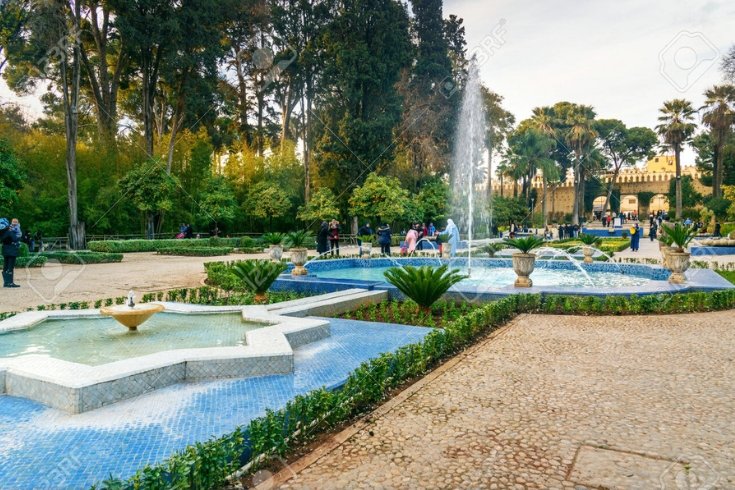
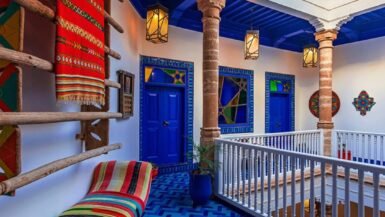


Leave a reply